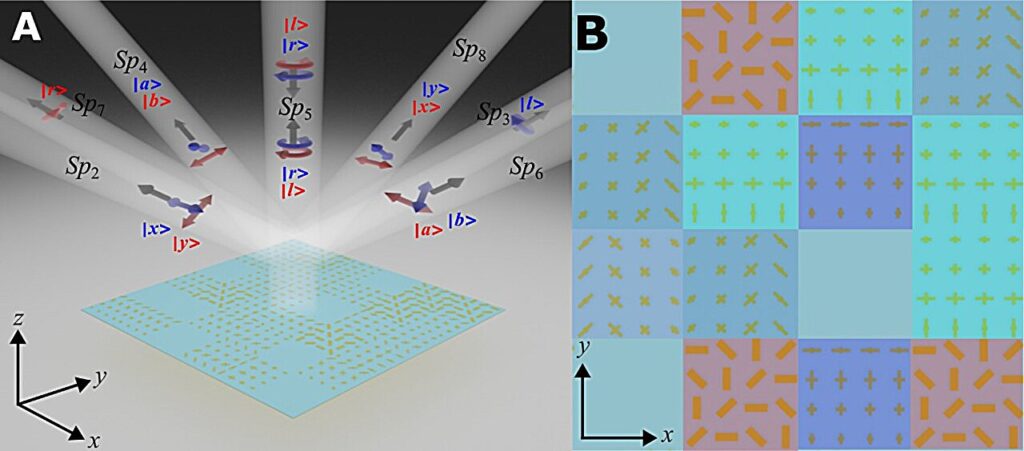Optical metasurfaces are finely crafted two-dimensional artificial nanostructures composed of meticulously designed arrays of ultrathin artificial atoms. These surfaces possess capabilities beyond natural materials, enabling multifunctional control of electromagnetic waves.
By designing the shape, size, rotation, and position of these artificial atoms, optical metasurfaces can precisely manipulate electromagnetic waves at subwavelength spatial resolutions, offering vast potential applications in the field of photonics.
Among the many applications, the control of polarization states using optical metasurfaces has been extensively studied. The development of polarization-encoded multifunctional metasurfaces represents a significant leap in optical technology, allowing a wider range of functions to be integrated into a single metasurface.
This polarization encoding integration is achieved through innovative artificial atom designs and the clever interweaving of different metasurface regions, heralding a new era in photonics. Metasurfaces, as multipurpose platforms for various optical applications, exemplify the ongoing progress towards more integrated and dynamically controllable optical components.
Despite significant advancements in polarization state control using optical metasurfaces, most current metasurfaces are limited to generating a few specific polarization states distributed across a limited number of channels.
Methods for controllably generating a full set of polarization states (e.g., left- and right-handed circularly polarized light, and linearly polarized light in different orientations) across multiple channels, as well as techniques for achieving switchable polarization states within different channels, have been rarely reported to date.
To address these challenges, the authors of an article published in the journal Opto-Electronic Advances proposed a reflective gold-silica-gold plasmonic metasurface. This innovative design features six randomly interleaved metasurface regions, each capable of outputting and collecting different polarization states at distinct reflection angles simultaneously.
This design method allows for multi-directional beam control across all polarization channels and enables polarization state changes in the output channels by switching the spin state of the incident circularly polarized light.
The design includes a nanobrick-shaped half-wave plate and four nano-cross-shaped quarter-wave plates. The half-wave plate can convert left-handed circularly polarized light to right-handed circularly polarized light, or vice versa. By rotating the half-wave plate in 45° increments, a geometric phase gradient is produced, separating the reflection angles of light with the same polarization state as the incident circularly polarized light.
The quarter-wave plates, rotated at specific angles, can transform incident circularly polarized light into linearly polarized light at different angles. These plates provide a linear phase gradient, converting circularly polarized light into linearly polarized light at orientations of 0°, 45°, 90°, and 135°, which are then reflected at different angles.
By integrating these nanoscale plates and designing them with different rotational angles, the metasurface can achieve simultaneous output of a full set of polarization states across multiple channels. Utilizing the advanced micro- and nano-fabrication and characterization platforms at the Center for Nano Optics at the University of Southern Denmark, the researchers experimentally validated their metasurface design.
This research marks a significant advancement in the field of polarization optics and paves the way for the development of compact, efficient, and powerful optical devices. The unique properties of these nanoscale wave plates open new avenues for applications ranging from imaging and sensing to communication and other advanced optical technologies.
The potential impact of this technology is immense, promising a bright future for the realization of complex optical systems that can be dynamically controlled, thereby enhancing the versatility and performance of optical components across various disciplines.
Provided by
Compuscript Ltd


